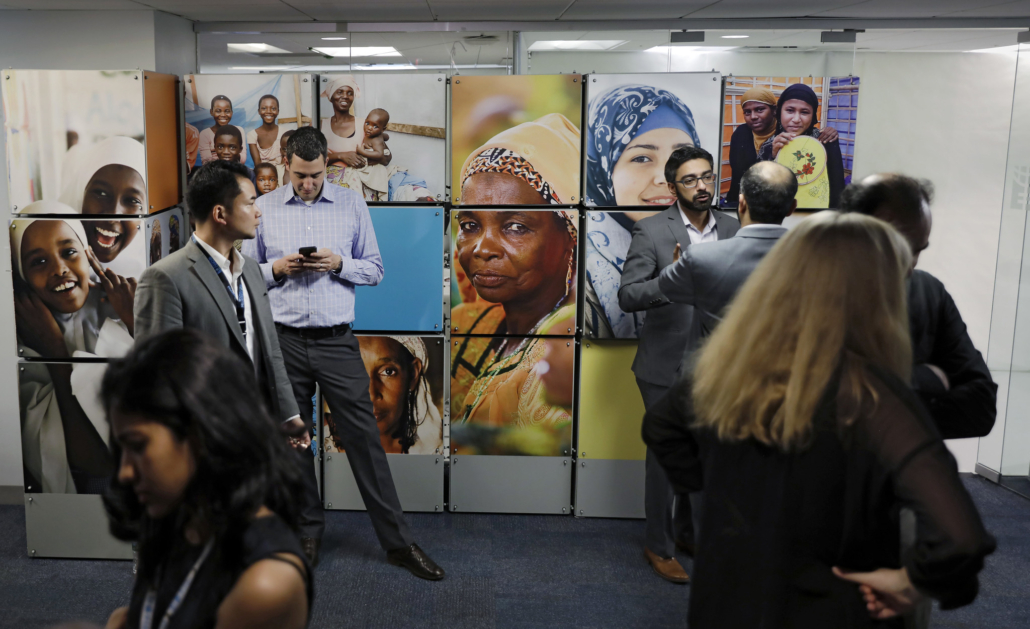The Use of Biometric Technology in the Fight Against Aid Fraud

Delivering foreign assistance presents formidable challenges, particularly in regions affected by conflict, where corruption, fraud and theft undermine the integrity of aid programs. Shockingly, an estimated 5% to 15% of foreign aid is lost due to fraudulent activities and diversions. To address these issues, biometric technology has emerged as a crucial tool in the fight against aid fraud.
Aid Theft and Fraud
Last month, Ethiopian officials and fighters stole food aid, leading the U.S. and UN to suspend aid to Ethiopia, a nation recovering from a two-year war. Although the food aid aims to benefit needy families, the relevant authorities discovered massive volumes of aid in commercial mills or markets. In March 2023, authorities found enough stolen food aid to feed 134,000 people for a month in a single town.
Additionally, individuals and groups sometimes use fake identities to steal aid from those truly in need of assistance. In 2018, Ugandan officials created false identities to unlawfully obtain millions of dollars in aid meant for refugees.
In other regions, terrorists have attempted to radicalize individuals and bolster recruitment efforts by diverting foreign assistance. From 2015 to 2019, the USAID Inspector General documented more than 350 allegations of fraud, armed group interference, and other issues involving aid in Syria and Iraq alone.
A Biometric Solution
Amid the challenges in providing aid, a technological solution has emerged: biometric technology. This technology automates the recognition of a person’s identity using unique physical characteristics. Aid officials document aid recipients’ biometric data, such as fingerprints or iris scans and use this data to verify beneficiaries’ identities during aid collection. As a result, biometric technology effectively reduces aid fraud and diversion.
Proponents assert that biometric technology simplifies registration processes because many individuals in need of assistance lack formal identification documents. Moreover, they consider users’ biometric data more reliable than paper documentation, which can be manipulated or copied, as it is unique to each individual’s body.
This technology ensures that assistance reaches its intended recipients, preventing unauthorized users or those using false identities from stealing aid. As a result, organizations can utilize biometric systems to enhance the effectiveness of foreign assistance programs worldwide and to increase accountability.
Implementation
Biometric solutions have undergone implementation in areas desperately in need of humanitarian aid, such as Jordan and Uganda, and have delivered encouraging results in these regions.
In 2012, UNHCR Jordan piloted the first cash assistance program using iris scans to confirm the identities of Syrian refugees in Jordan and facilitate cash transfers. By 2014, the iris scan cash assistance program achieved a 20% reduction in the number of families living below the 50 JOD/month ($71) poverty threshold. Moreover, the program proved to be highly cost-effective, with $95 of each $100 donated directly benefiting refugees.
A similar program in Jordan later integrated the same iris scan technology, allowing more than 100,000 Syrian refugees to purchase groceries using aid from the World Food Programme (WFP).
In Uganda, which is home to the largest refugee population in Africa, approximately 1.1 million asylum-seekers have undergone biometric registration, representing 75% of the population who sought asylum there before the program’s initiation. The introduction of biometric verification technology has facilitated the implementation of biometric checks at food distribution and collection sites, thereby enhancing credibility and ensuring that aid reaches those genuinely in need.
Criticism
Despite success stories, critics have raised concerns about the usage of biometric technology in foreign assistance programs. Their focus lies on issues such as privacy, data protection, false positives and the potential exclusion of certain groups from assistance programs.
The criticism has resulted in delays and prevented the implementation of biometric technology in specific regions. For example, the Houthi rebel group in Yemen opposes the use of biometrics in assistance programs, as they argue that it could undermine sovereignty and lead to the dangerous control of information. Due to this opposition, the Houthis have resisted the adoption of biometric technology in a region where more than 24 million people require humanitarian assistance.
Looking Forward
Until now, aid officials have utilized biometric recognition software to register 4.4 million refugees in 48 countries worldwide and the utilization of this technology continues to expand. As technology advances rapidly, biometrics should offer an even greater potential for a positive humanitarian impact globally.
– Abigail Hill
Photo: Flickr
